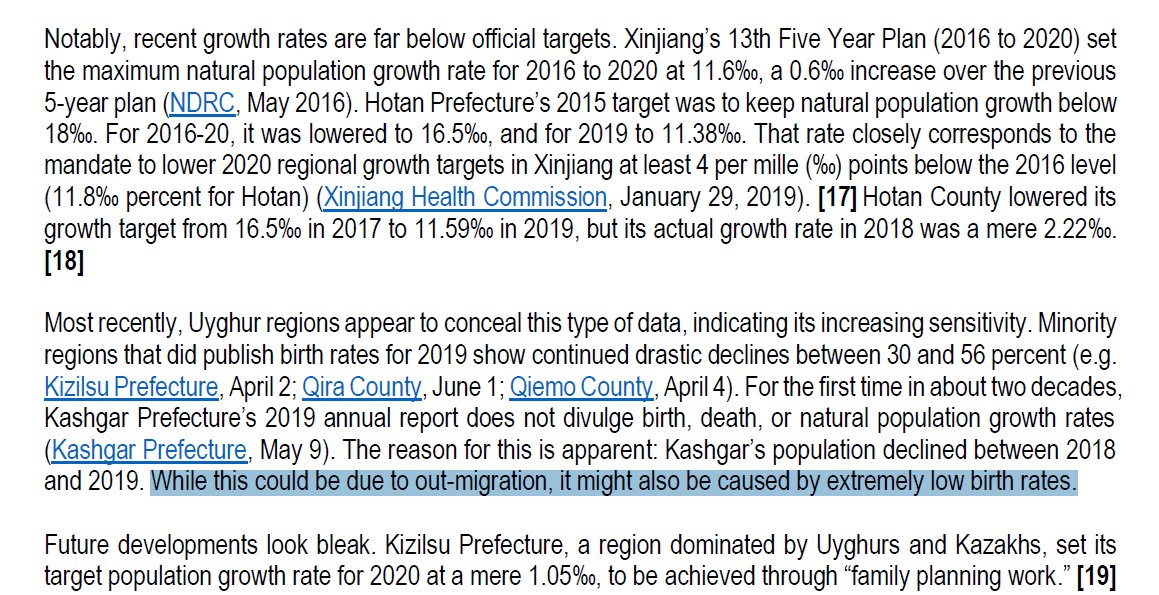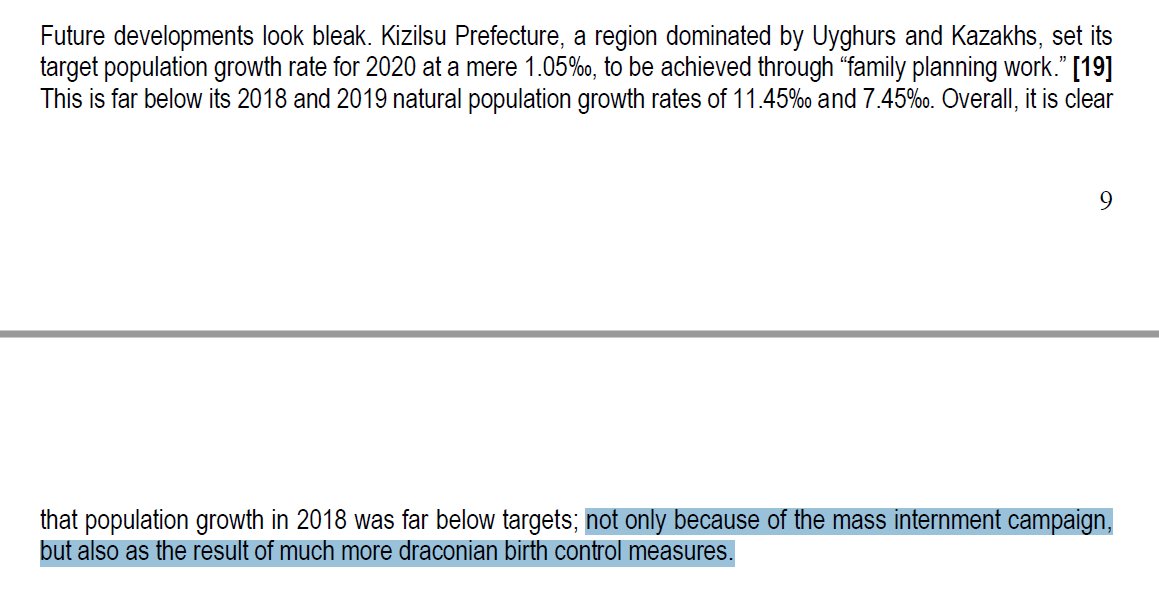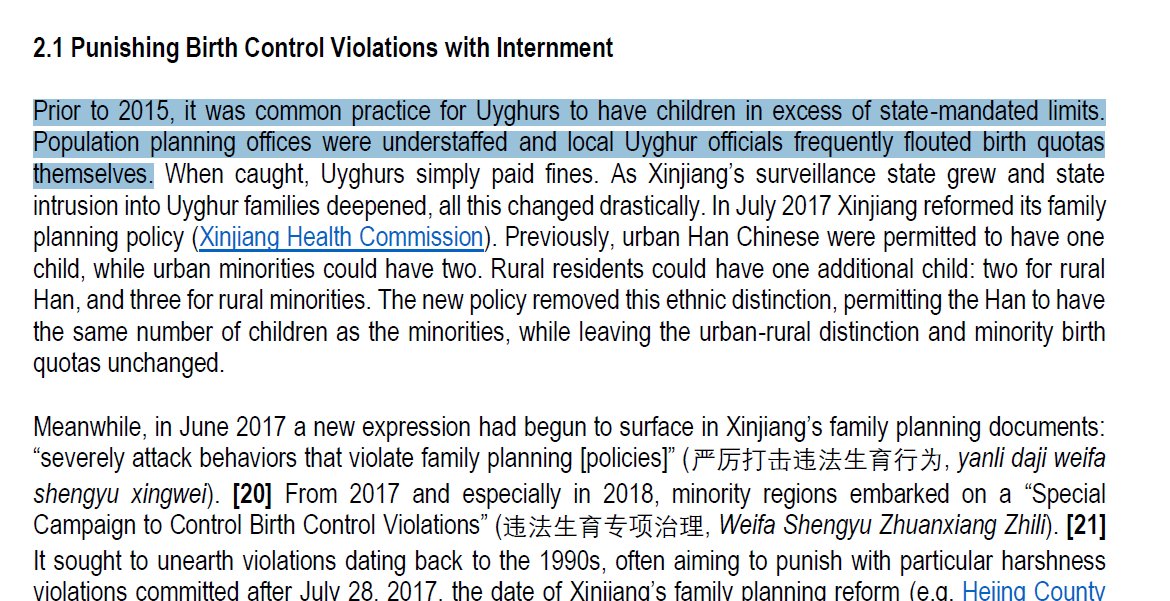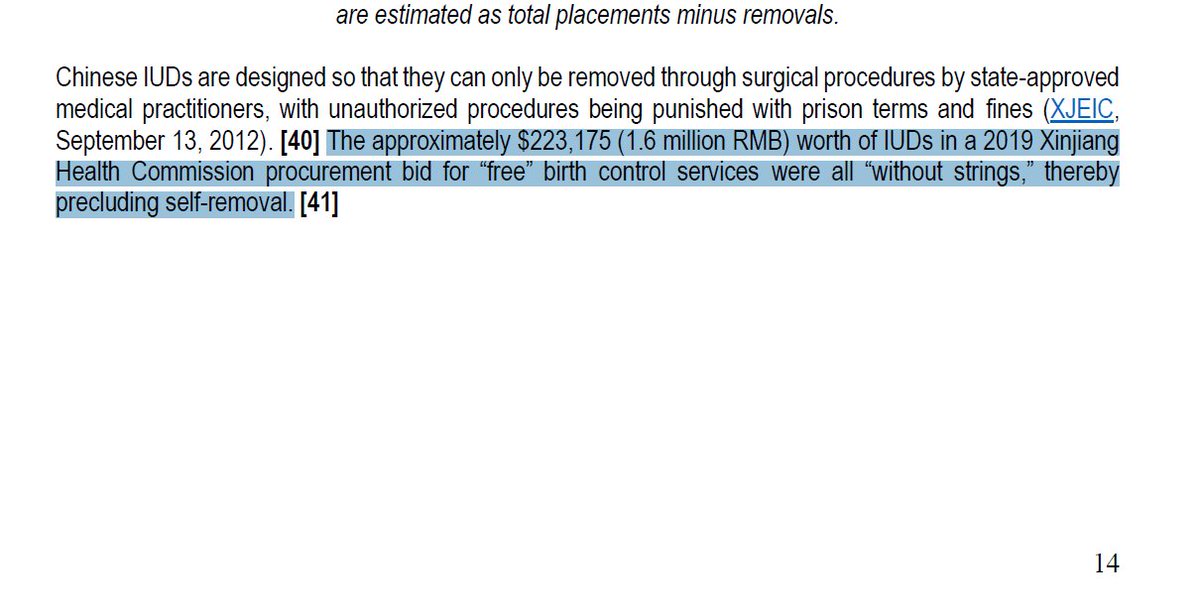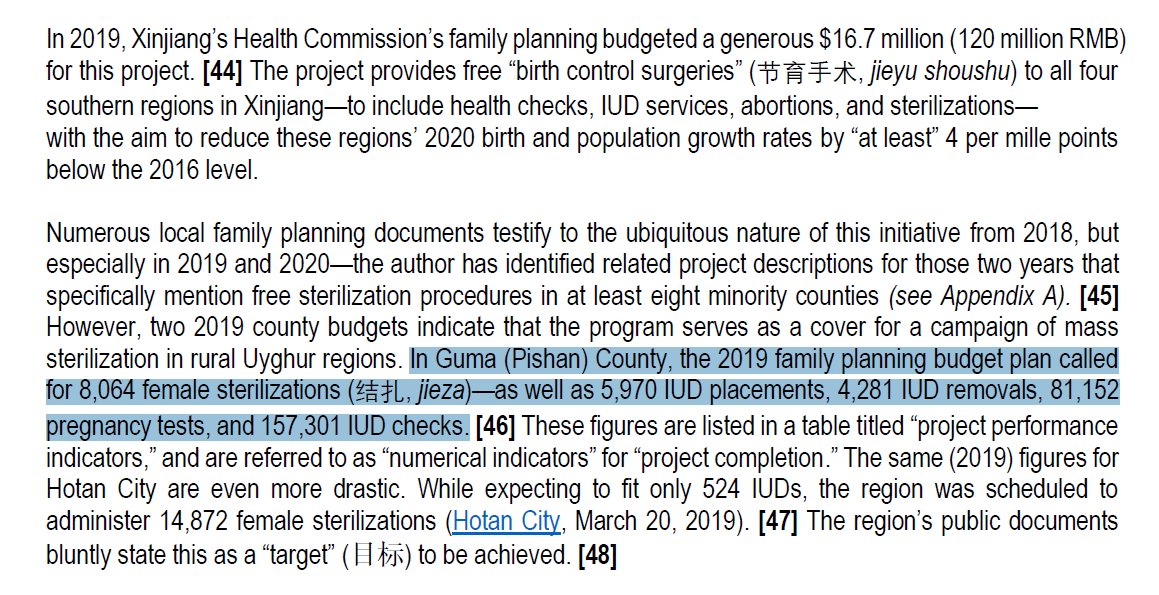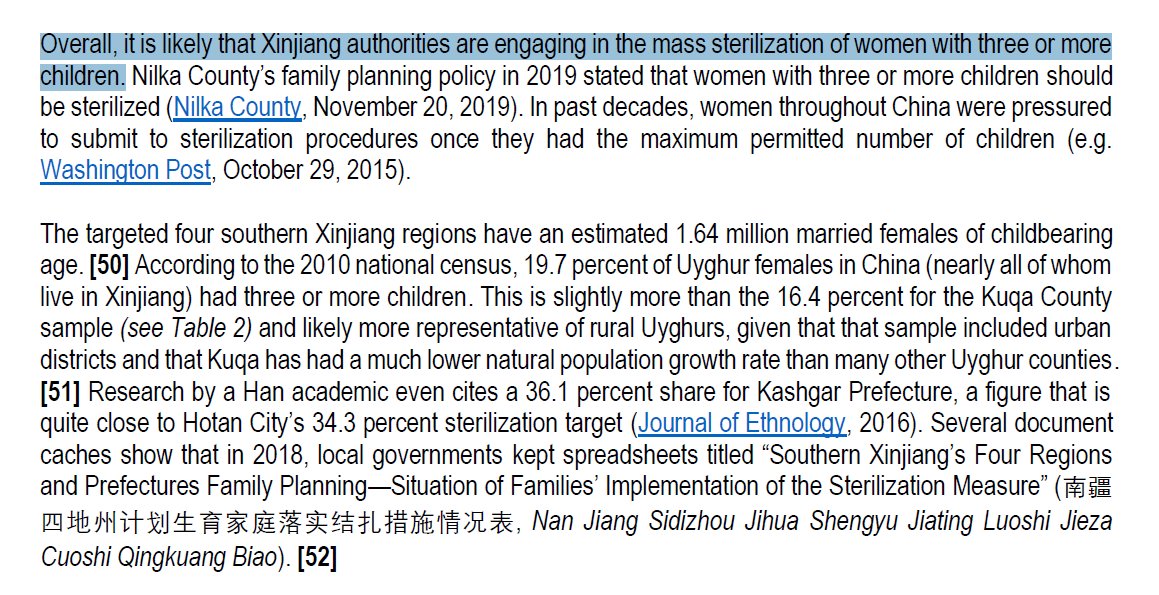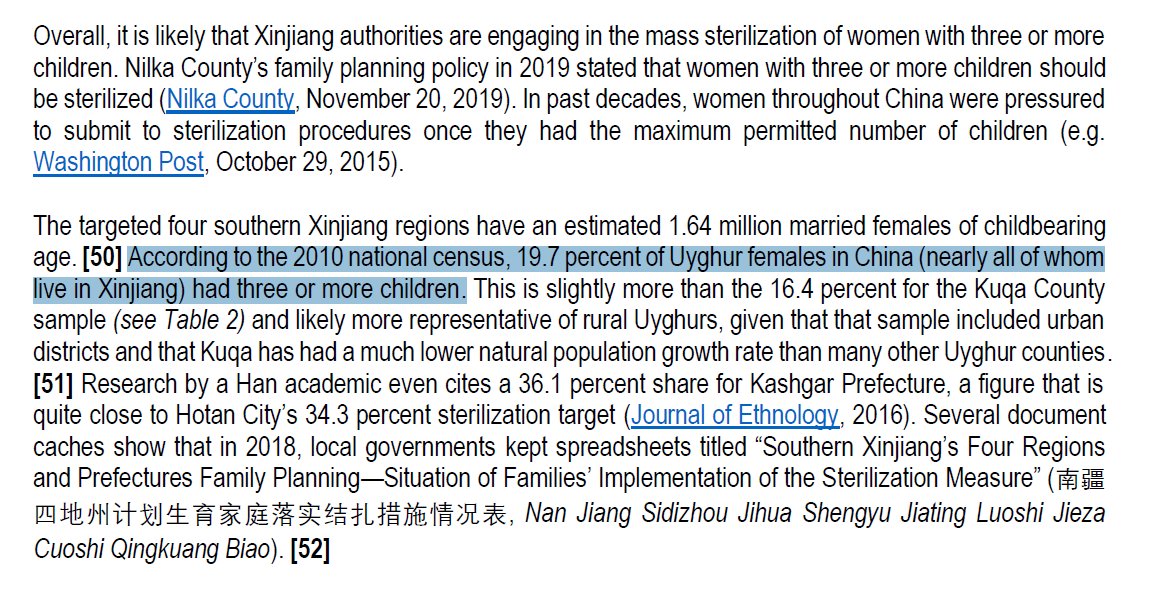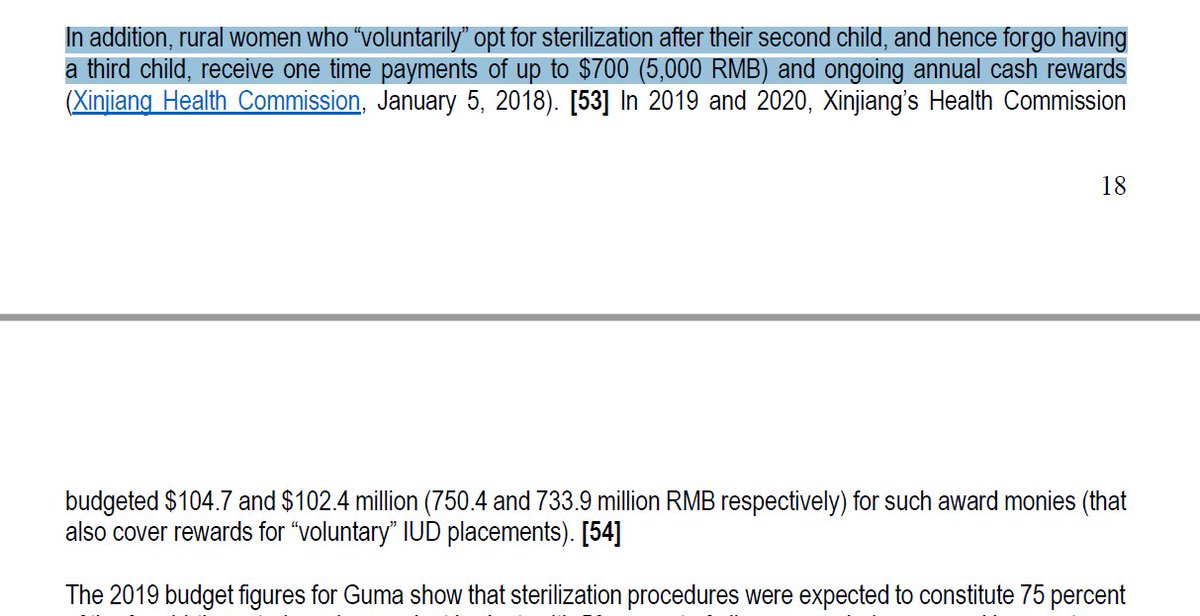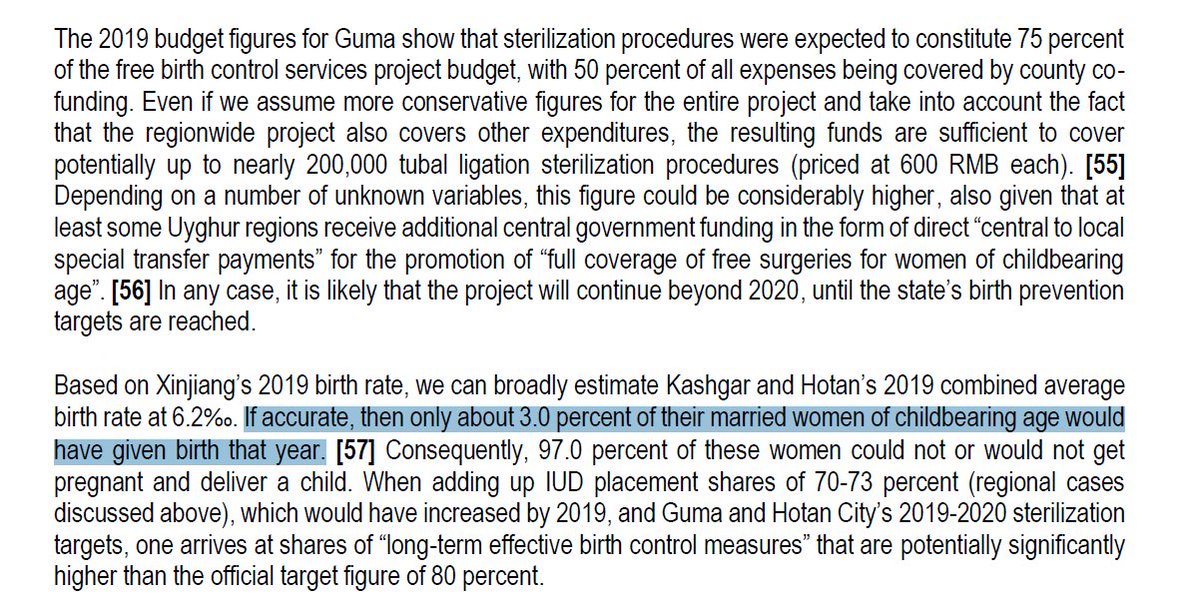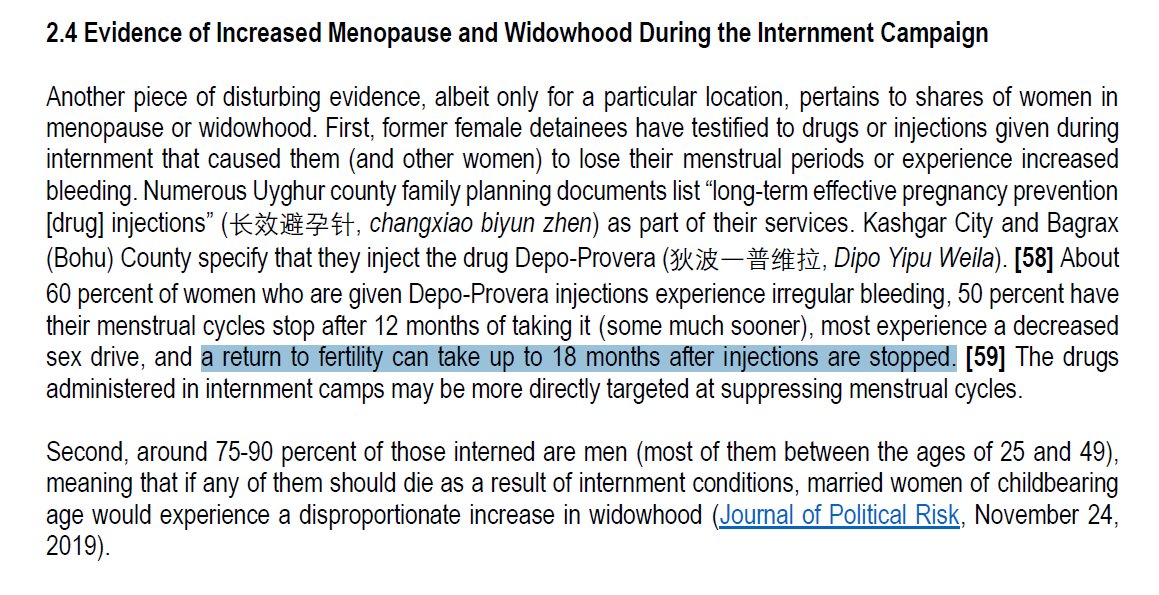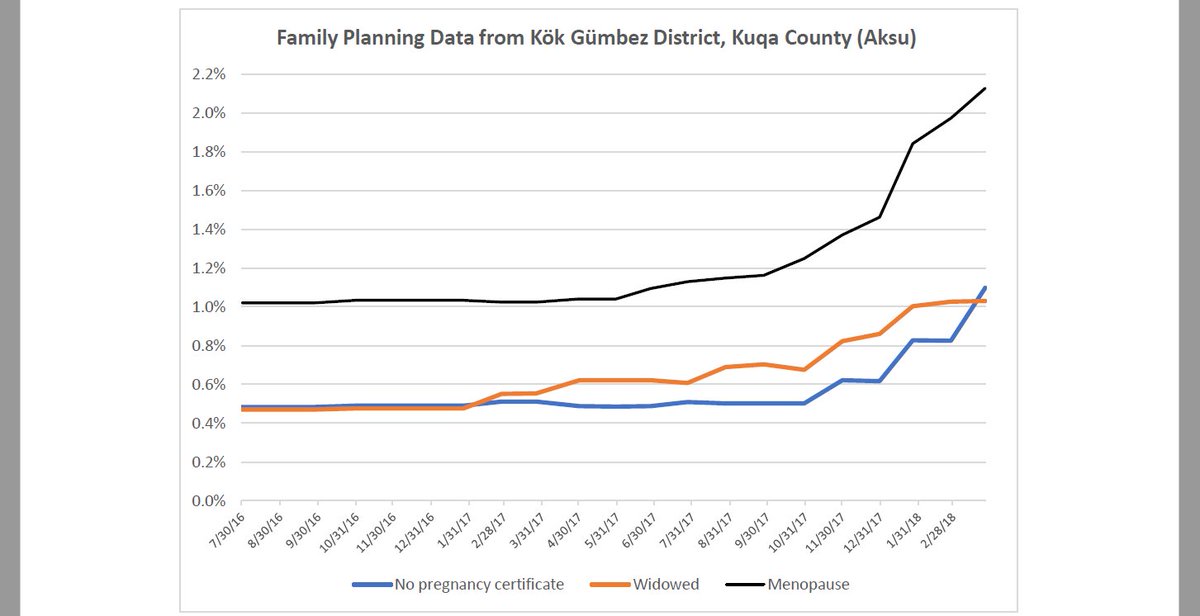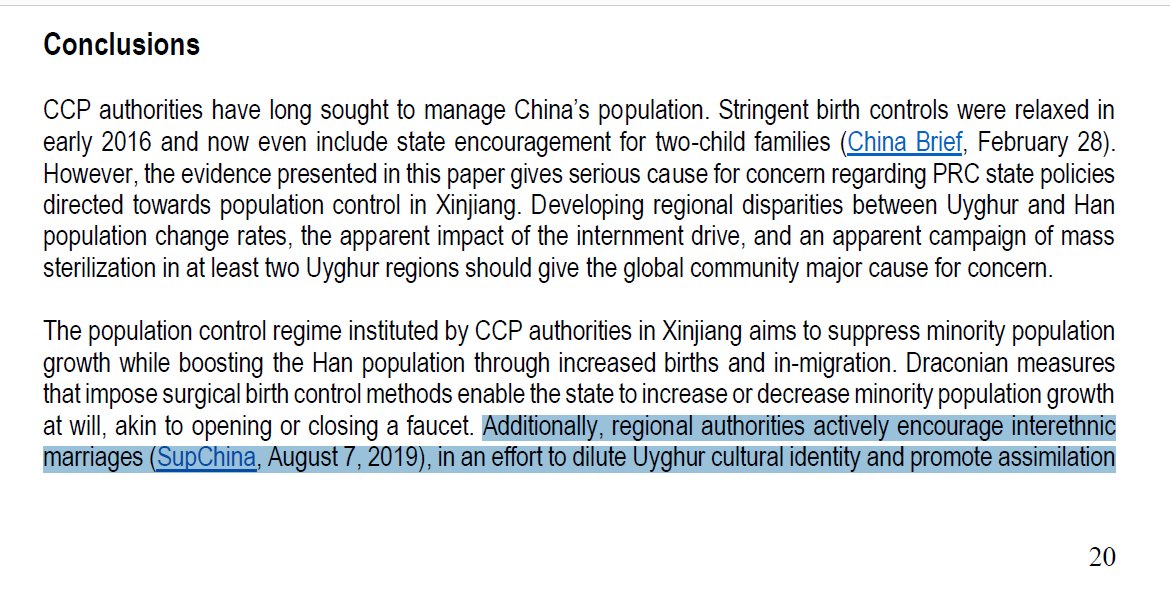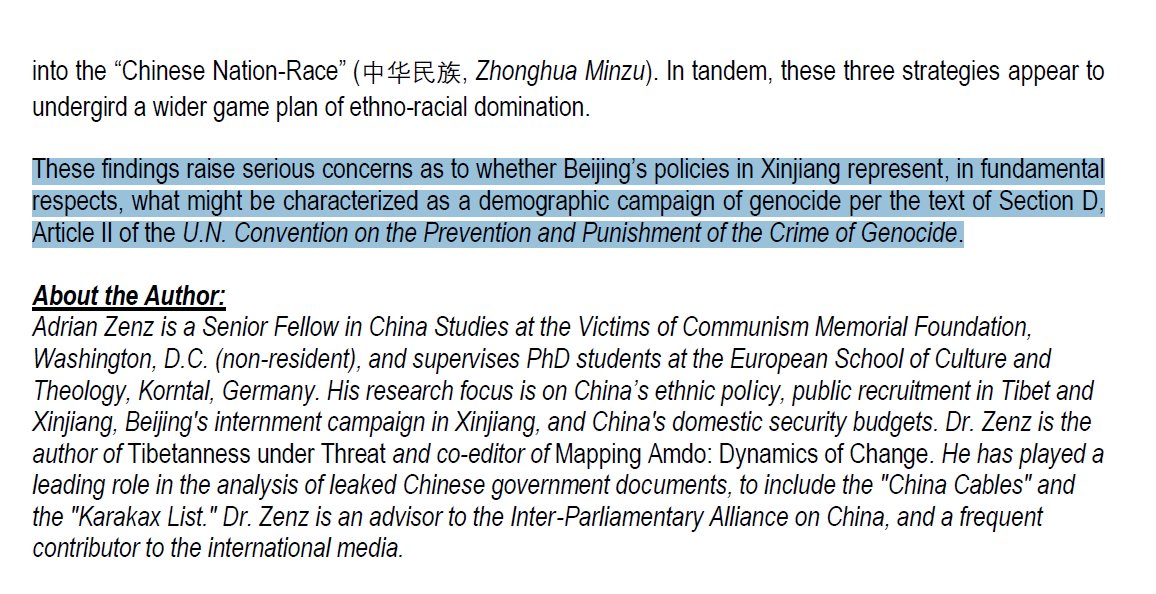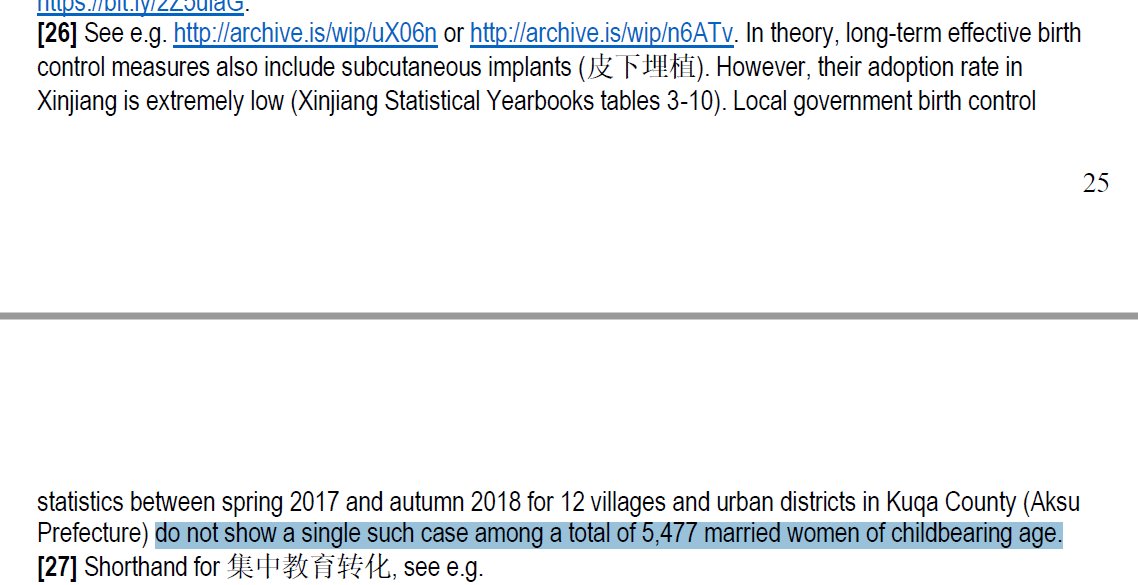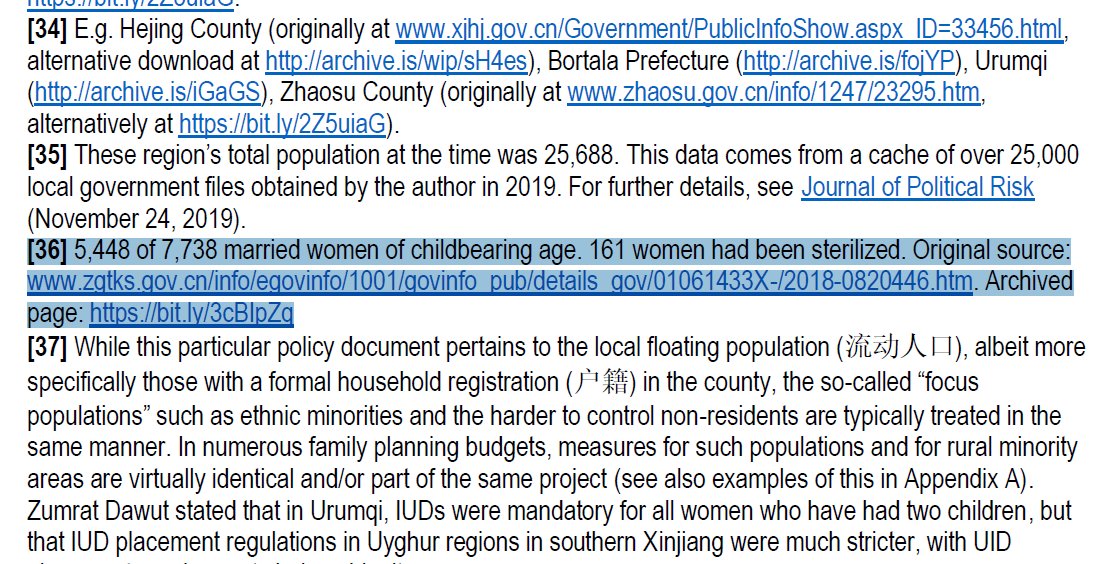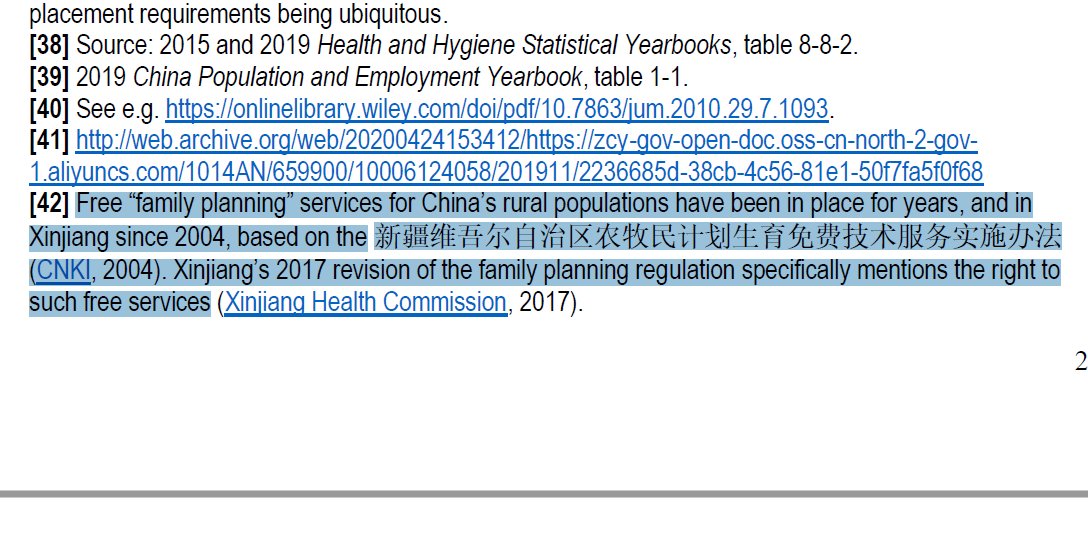This is a thread to examine Adrian Zenz& #39;s report on birth control in Xinjiang (XJ). He has complained that people attack his credibility rather than his work, so I will attempt to examine his analysis and claims on their merits. This will take some time... https://jamestown.org/wp-content/uploads/2020/06/Zenz-Sterilizations-IUDs-and-Mandatory-Birth-Control-FINAL-27June.pdf?x76002">https://jamestown.org/wp-conten...
S0.0: Editor& #39;s note includes a fundamental misunderstanding of Chinese language and intentions. 中华民族 is interpreted to mean a uniform "Chinese Nation-Race". However, the Chinese government& #39;s definition includes all 56 races within Chinese borders. https://baike.baidu.com/item/%E4%B8%AD%E5%8D%8E%E6%B0%91%E6%97%8F/1186?fr=aladdin">https://baike.baidu.com/item/%E4%...
S0.1: This is a major error and provides an incorrect context for the whole report. There is an implicit assumption that the government wants assimilation due to use of this term, but the term is actually an all-inclusive term with no implications of assimilation.
S0.2: This will severely impact the claim that there are "human rights violations that meet the criteria for genocide" as defined by the UN, because the intentions of government action have been completely misunderstood based on a misinterpretation of the language.
S0.3: Final point in Summary of Major Findings would only make sense under the assumption that the gov& #39;t wants to assimilate all races. The claim that the findings can be used to prove genocide will require a thorough discussion of the definition of genocide (not in the report).
S1.1.1: Language in the first paragraph is tainted by describing Han Chinese presence as a “settler force”, which already assumes that Han Chinese presence was not natural and Xinjiang is not part of China.
S1.1.2: Presumptive unnatural presence of Han Chinese is why Zenz seems to interpret this graph in a negative light, as if the growth of Han Chinese population is evidence of genocide, even though the Uyghur population is growing at the same rate.
S1.1.3: First paragraph below is presumably a set up for the argument that the birthrate then dropped from 2017, thus proving genocide...but 38 years is a long time to let a population grow unabated, before doing a 180 and deciding that it& #39;s time to start genociding them.
S1.1.4: "The data neither confirms nor contradicts anecdotal accounts of Uyghurs being shifted to prisons in other parts of China"...so why is this in the report? This is especially odd to include, since there’s a general trend of migration away from small towns into big cities.
S1.1.5: "One XPCC region promised incoming young families...5.8 acres of arable land...jobs that pay up to 102,500 RMB per year...[apartments] with four years free rent...Many such notices specifically target young families with children"...and the problem with this is??
S1.1.6: Overall, this section goes through statistics, but does not explain how it supports his genocide hypothesis. Unless your position is that Han Chinese should not be present in Xinjiang at all, then none of the information offered in this section is alarming at all.
S1.2.1: Section 1.2 summarizes thoughts on the impact of religious extremism on population and development by Chinese academics. Zenz claims these are influential in Chinese policy making, but no evidence is given for this claim.
S1.2.2: If we examine the reference [14], we find that the article mentions that 中华民族 is meant to include every individual living in China, and there are some 640k people who currently doesn& #39;t belong to one of the recognized ethnicities, and none of them should be left behind
S1.2.3: So, far from trying to eliminate any particular race or people, the author is basically saying the current classification system is not diverse enough, and needs to be more inclusive, down to the individual level.
S1.3.1: This section looks at population growth trends to imply that there& #39;s something nefarious going on. The problem with this is that population trends change due to a number of socio-economic factors, so at best it is an indicator to suggest more investigation.
S1.3.2: The section also contains clues to other reasons why population change is occurring. For example, in the first paragraph, there& #39;s this observation that the Han population is falling as well, despite an increase in birth quotas. Why does this not raise similar questions?
S1.3.3: Table 1 below is supposed to show a decrease in population in minority regions, in contrast to Han regions, to suggest that repression is happening. However, it can equally be explained by the fact that there& #39;s net migration into big cities, where Han people migrate to.
S1.3.4: Further, it& #39;s noted that "growth rates are far below official targets". If CPC is trying to eliminate a population, why would it set a growth target?
The report actually gives a plausible alternative explanation for the trends; "this could be due to out-migration".
The report actually gives a plausible alternative explanation for the trends; "this could be due to out-migration".
S1.3.5: The conclusion of this section points to the mass internment campaign and birth control measures, with no justification, and omits their own suggestion of out-migration as a possible explanation. This is academically dishonest.
S2.1.1: This section focuses on punishments for violating birth control laws. The first line states that these laws were not strictly enforced previously. More recent reforms removed ethnic distinction and stricter enforcement. This seems to contradict the genocide claim.
S2.1.2: The article details how people who violate the law and refuse to comply or pay the fine are sent to re-education camps. Is this consistent with the genocide claim? Why not just jail them at the first offence, with no option to pay a fine?
S2.1.3: The section ends by mentioning that zero birth control violations is the policy target for Xinjiang. I don& #39;t know why this is worth mentioning...basically the government is saying they don& #39;t want people to break the law, which is entirely reasonable.
S2.2.1: This section focuses on IUD usage. The 80% new IUD placement figure is quoted to suggest obvious anomalies. However, this is a misleading statistic, since "new" IUDs are defined as IUD insertions minus removals, which is meaningless and is volatile from place to place.
S2.2.2: Also note that the graph in the report doesn& #39;t show a particular trend in the IUD placements in Xinjiang. It should be noted that the per capita IUD insertion rate is higher than average in Xinjiang, but so is the IUD removal rate.
S2.2.3: The link for unauthorized procedures is not specific to IUDs for XJ, but a general punishment statute. By law, all medical practitioners have to be qualified and state approved in any country. The assertion that IUDs given in 2019 precludes self-removal is not explained.
S.2.3.1: This section is about sterilizations. It mentions that county budgets include amounts for IUD insertions AND removals, which contradicts the implication in the previous section, that the government does not allow IUDs to be removed once inserted.
S2.3.2: The article noted that the government is actively sterilizing women with more than 3 children, which is entirely consistent with birth control laws. The claim that 34.3% of women in Kashgar are being sterilized is consistent with 36.1% of them having 3 or more children.
S2.3.3: The article throws doubt on the nature of the voluntary sterilization programs, but notes that it is for people who sterilize after their second child. Why would the government allow any births if the goal was to eliminate the population?
S2.3.4: The section finishes by extrapolating from budget figures, and estimating birth rates from 2018 figures. This is potentially a very inaccurate calculation. No context is given regarding the 3% of eligible women giving births (e.g. how does it compare to previous years?)
S2.4.1: This section talks about menopause and widowhood. The first paragraph mentions drugs injected, which are only 50% effective after 12 months and fertility return after injections are stopped. No evidence is given for how they are targeted at suppressing menstrual cycles.
S2.4.2: The article then talks about the increase in widowhood and menopause, but only for 1 district in 1 county and only from July 2016 to February 2018, which is a very limited dataset to make a point about population trends and potentially a government directive for genocide.
S3.1: The conclusion mentions encouragement of interethnic marriages and dilution of Uyghur cultural identity, but this was not discussed at all in the body of the article. It also mentions a game plan of "ethno-racial domination", also not explored in the body of the article.
S3.2: The final paragraph asserts genocide under UN definitions, which is not discussed in the body of the article. It also doesn& #39;t discuss the issue of intent, which is a required element in the UN definition of genocide.
R1.1: It& #39;s interesting that some observations from the references actually contradict the genocide claim. For example, sterilization methods also includes subcutaneous implants, but this method is not used even once.
R1.2: The rate of sterilization is quite low in reference 36, only 161 out of 7,738 married women of childbearing age are sterilized. 70% have had IUDs inserted, but it doesn& #39;t necessarily point to genocide. It could be due to birth control law enforcement.
R.1.3: Reference 42 details how free family planning services have been widely available before 2017, so there& #39;s nothing suspicious about them in 2017, contrary to what& #39;s implied in the body of the article.
As conclusion to this exercise, I just published this article on Medium: Adrian Zenz Shows There’s NO Uyghur Genocide https://link.medium.com/ZtBSI5mi3db ">https://link.medium.com/ZtBSI5mi3...

 Read on Twitter
Read on Twitter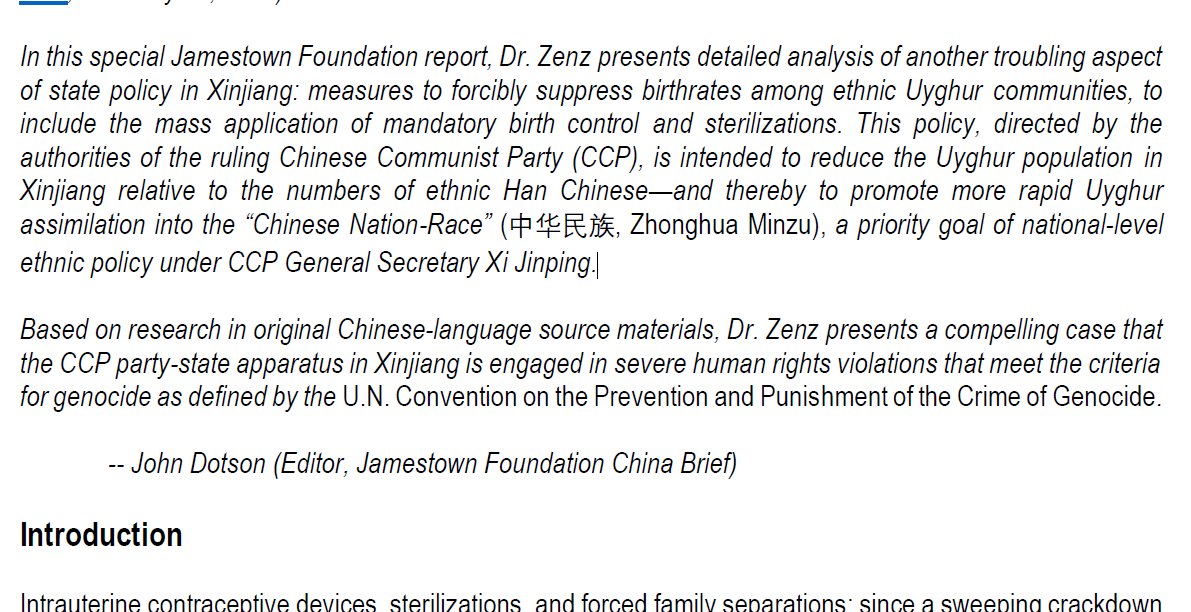
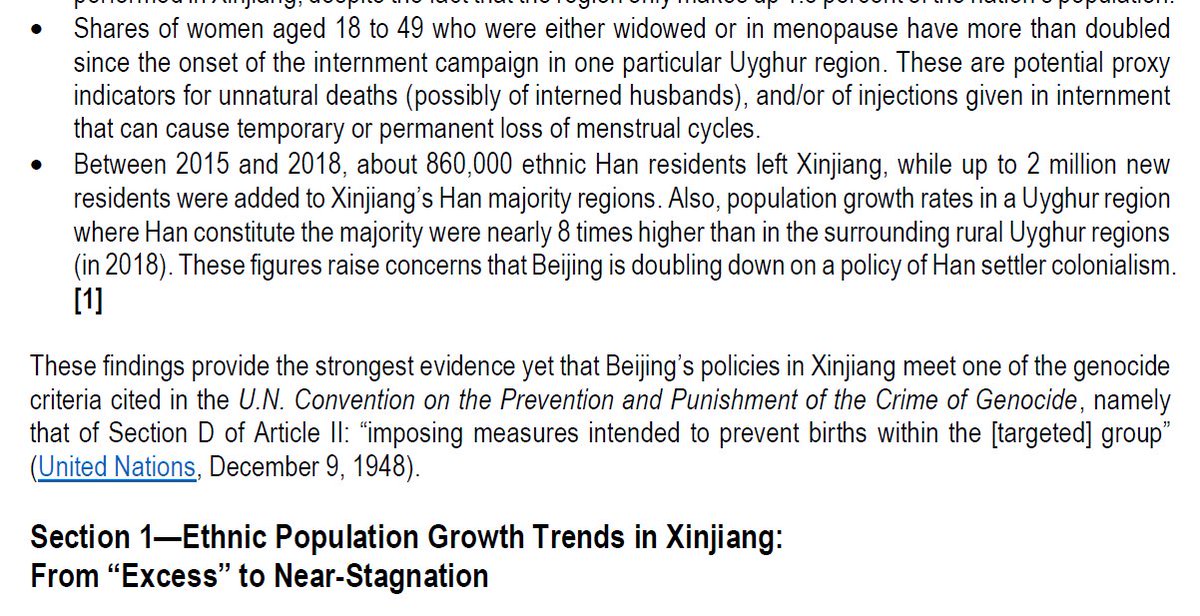
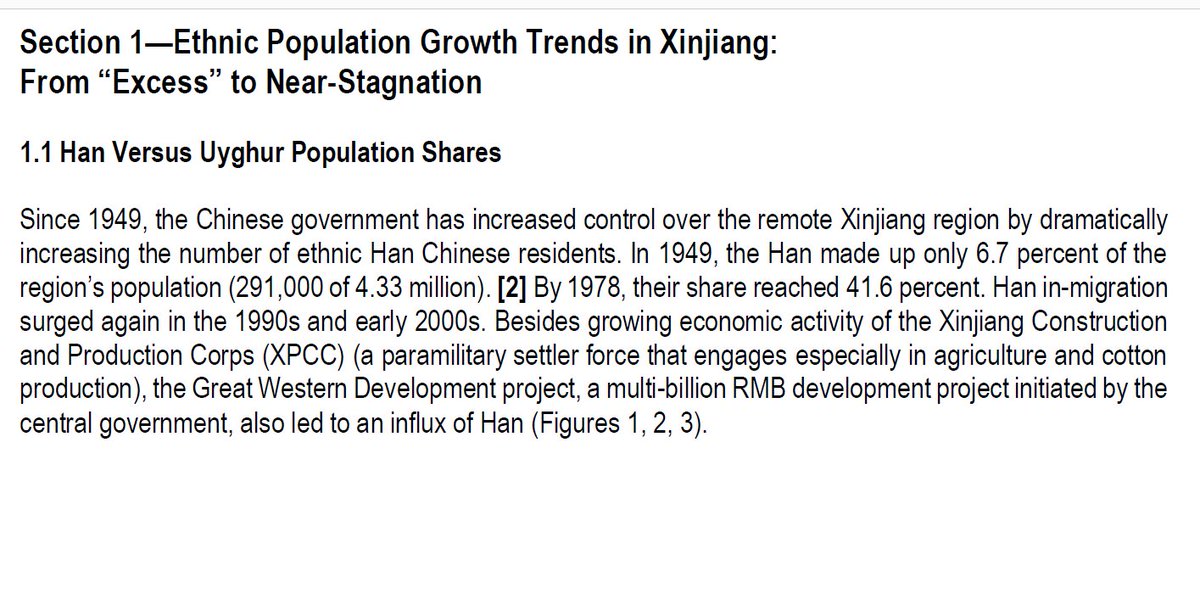
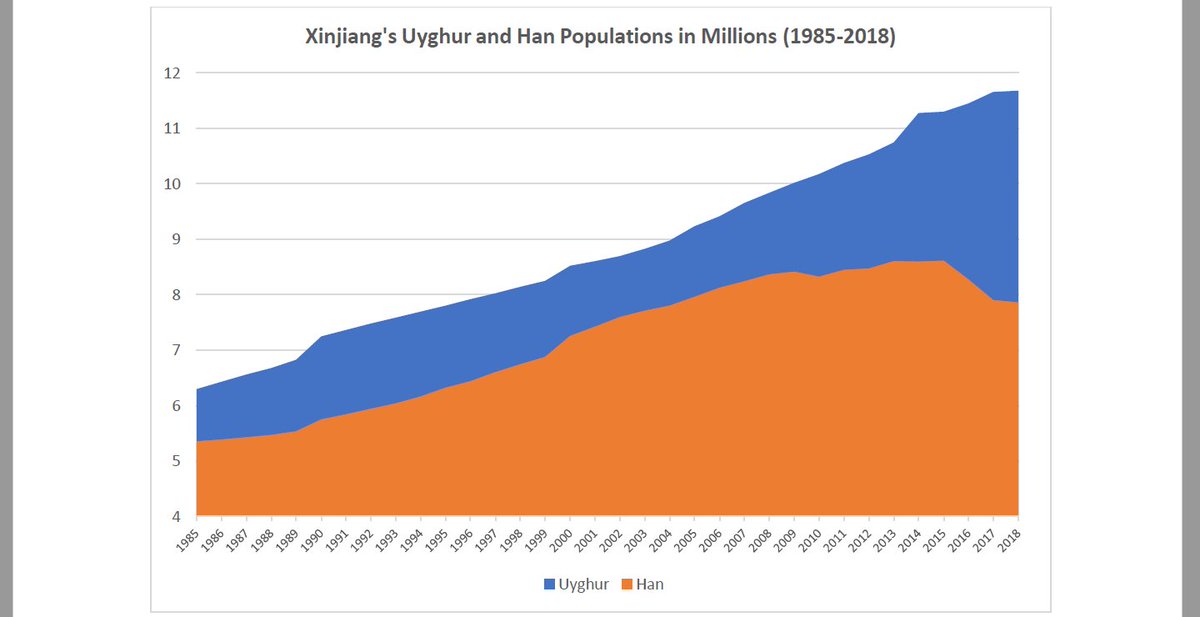

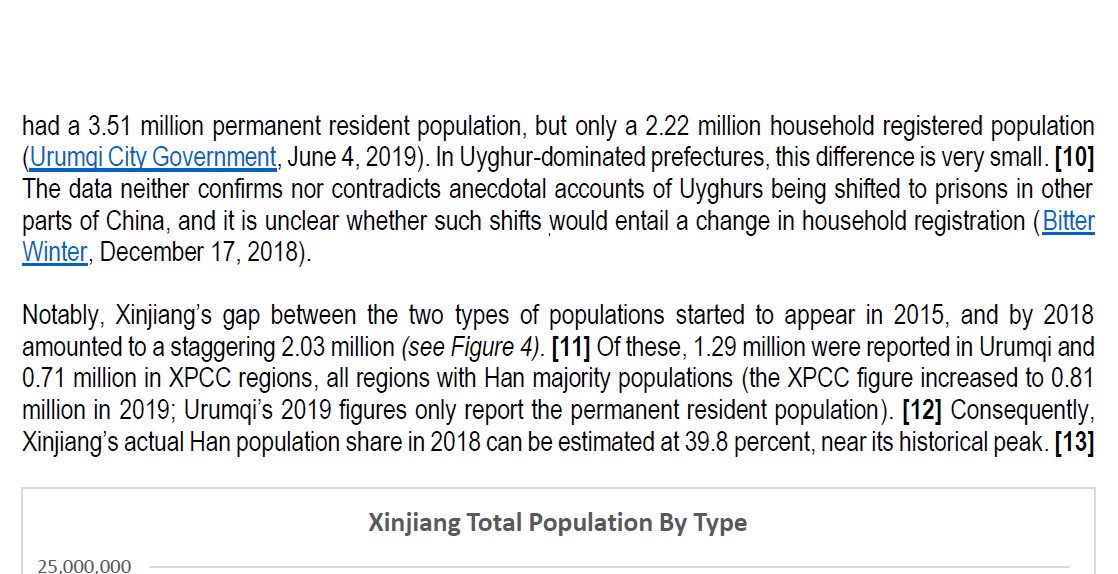
![S1.1.5: "One XPCC region promised incoming young families...5.8 acres of arable land...jobs that pay up to 102,500 RMB per year...[apartments] with four years free rent...Many such notices specifically target young families with children"...and the problem with this is?? S1.1.5: "One XPCC region promised incoming young families...5.8 acres of arable land...jobs that pay up to 102,500 RMB per year...[apartments] with four years free rent...Many such notices specifically target young families with children"...and the problem with this is??](https://pbs.twimg.com/media/EsWDtfJVEAgTu6-.jpg)
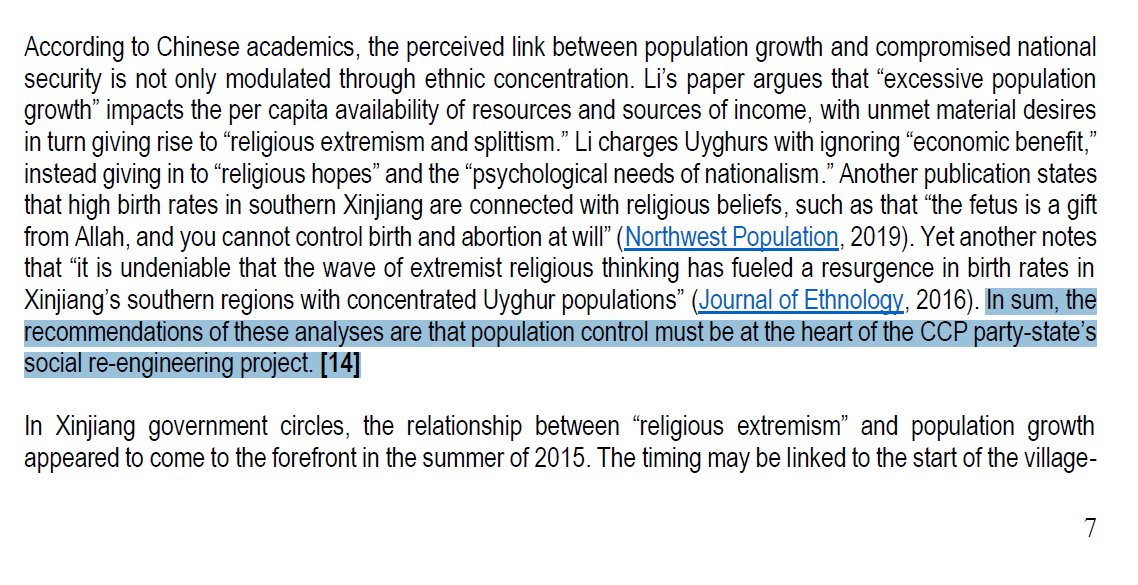
![S1.2.2: If we examine the reference [14], we find that the article mentions that 中华民族 is meant to include every individual living in China, and there are some 640k people who currently doesn& #39;t belong to one of the recognized ethnicities, and none of them should be left behind S1.2.2: If we examine the reference [14], we find that the article mentions that 中华民族 is meant to include every individual living in China, and there are some 640k people who currently doesn& #39;t belong to one of the recognized ethnicities, and none of them should be left behind](https://pbs.twimg.com/media/EsbgevCVoAAkTjc.jpg)


